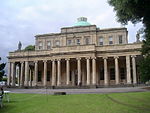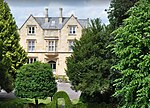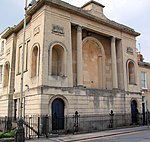Pittville

Pittville is a residential suburb of Cheltenham, Gloucestershire, England, founded in the early 19th century by Joseph Pitt. The population of Pittville Ward at the 2011 Census was 5,327. It contains Pittville Park, with its long gardens, two lakes, boat house, three cafes (including the boat house), tennis courts, menagerie, children's play area, 9-hole pitch and putt golf course, and one of Cheltenham's grandest and most celebrated buildings, the Pump Room. The upmarket tone of the area is set by the architecture: in addition to the Pump Room, Pittville contains some of the finest examples of Regency and Victorian housing in Cheltenham, including many of the town's largest houses. Schools in Pittville include Pittville School (the former Pate's Grammar School for Girls), and the private prep school Berkhampstead School. Gustav Holst's father, Adolph von Holst was organist at All Saints' Church, Pittville.
Excerpt from the Wikipedia article Pittville (License: CC BY-SA 3.0, Authors, Images).Pittville
Malden Road,
Geographical coordinates (GPS) Address Nearby Places Show on map
Geographical coordinates (GPS)
| Latitude | Longitude |
|---|---|
| N 51.908333333333 ° | E -2.0666666666667 ° |
Address
Malden Road 83
GL52 2BU , Cleevemount
England, United Kingdom
Open on Google Maps







